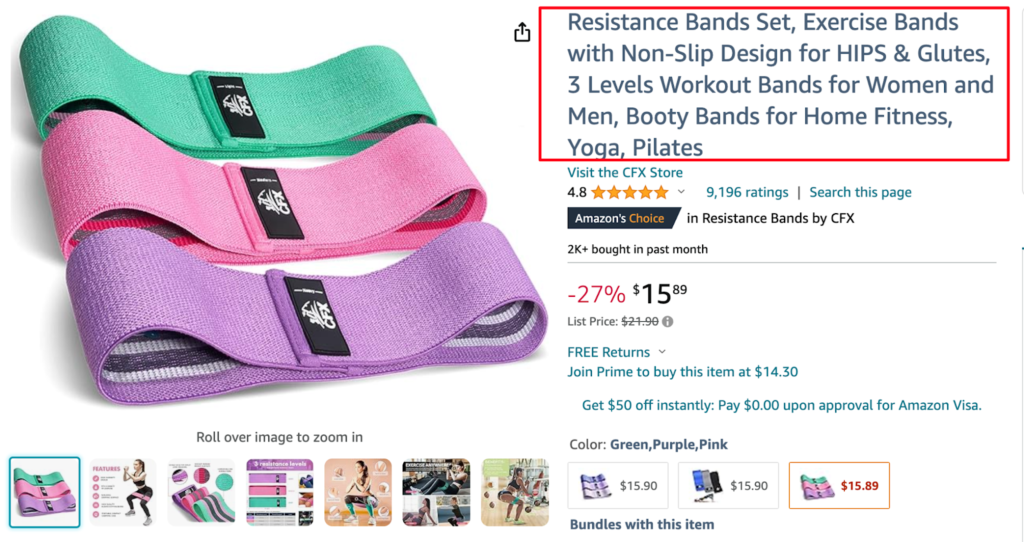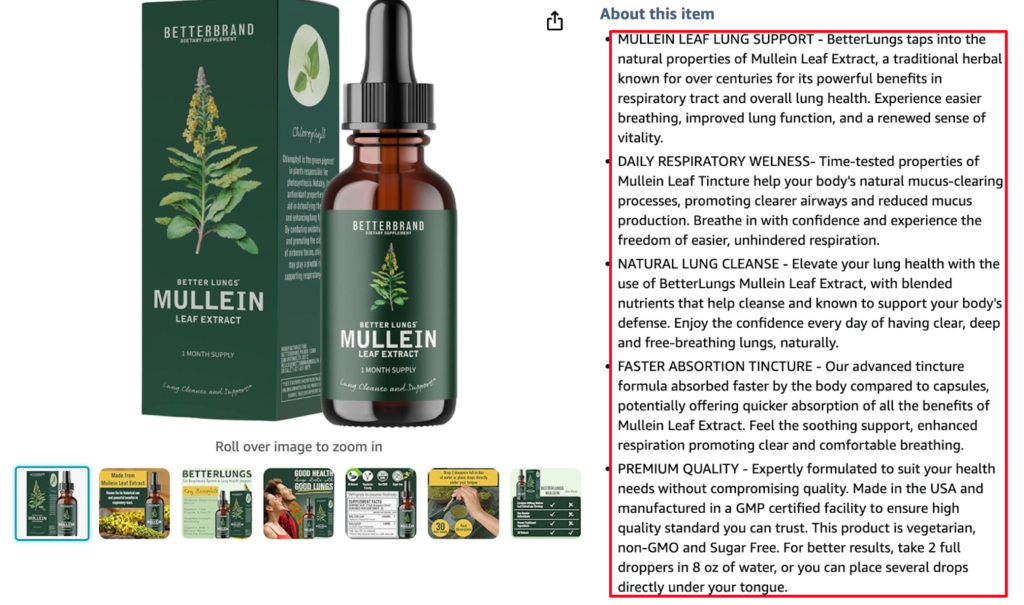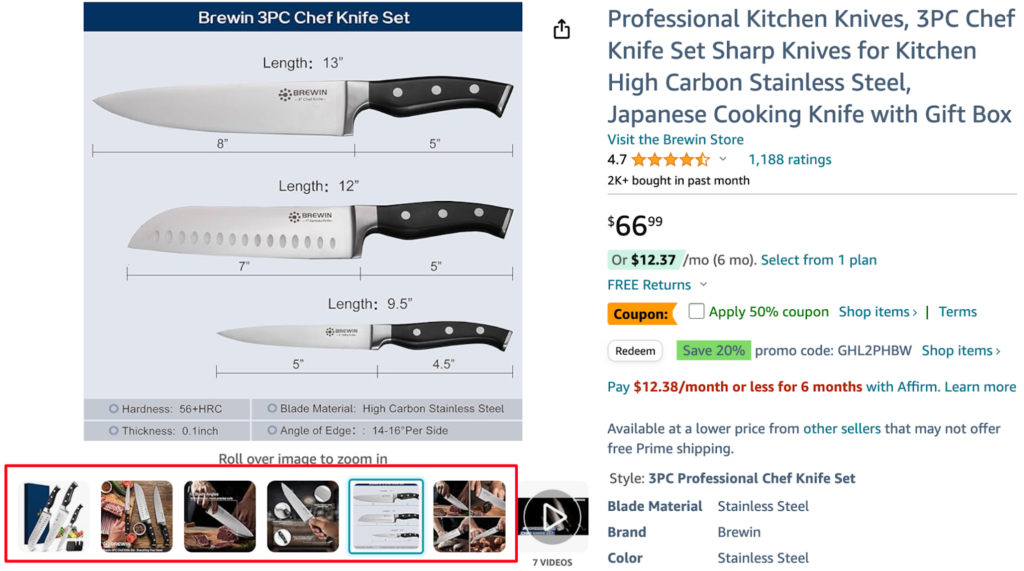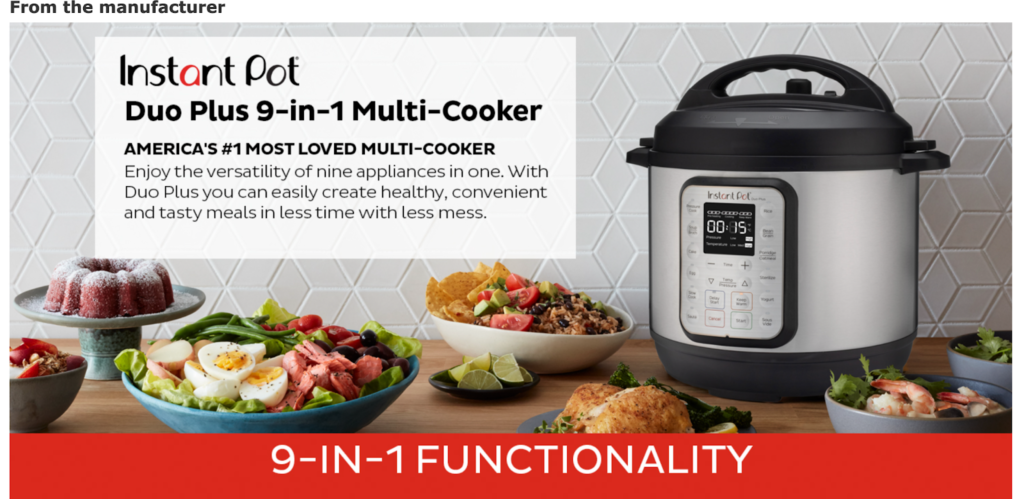
Listing a product on Amazon is really just a start. Once your product is listed, all your time, effort and money go into convincing customers that your product is actually good enough to buy.
Today, we’ll go over the basics of listing optimization and look at some of the ways sellers can improve and optimize their listings to rank higher on Amazon.
What is Amazon listing optimization?
Listing optimization includes scaling product detail pages and optimizing everything a customer sees and interacts with: title, bullet points, description, images, A+ Content and reviews.
Why is Amazon listing optimization important?

With hundreds of sellers competing for limited real estate, being seen on Amazon can be incredibly difficult. Customers hardly ever go to the second page of the SERPs, so it is vital to rank on the top. Amazon listing optimization is one of the most sustainable and effective ways to improve the ranking and visibility of your product.
The ranking on Amazon is controlled by the A10 algorithm that aims to show browsing customers optimized listings that match customers’ search queries. If your listing isn’t optimized with high-demand keywords, sales-inducing copy and enticing images, the algorithm will never rank your products up in the search result pages.
In short, Amazon product listing optimization is a rewarding investment that’ll pay for itself in just a few months.
Components of an optimized Amazon listing

1. Title:

Title is one of the first things a customer interacts with and it is displayed heavily in the search result pages. When creating a title, be sure to include your brand name, root keywords, crucial product information (such as size or package information) and the product’s defining features. The order in which this information is displayed is vital. Add your brand name first followed by the product’s important keywords and finish off with the features.
Things to keep in mind
- Do not exceed Amazon’s title character limit (200 characters for most categories)
- Do not include promotional phrases, such as “free shipping”, or “100% quality guaranteed”.
- Do not include special characters such as ~ ! * $ ? _ ~ { } # < > | * ; ^ ¬ ¦
- Do not use ALL CAPS
- Capitalize the first letter of each word except for prepositions (in, on, over, with), conjunctions (and, or, for), or articles (the, a, an)
- Use punctuation, like hyphens (-), forward slashes (/), commas (,), ampersands (&), and periods (.) to improve readability
2. Bullet points & Description:

Bullet points are a primary source of information for customers. Sellers can add up to 5 bullets (500-character limit) and vendors can add up to 10 bullets (250-character limit per bullet). A lot of sellers use ALL CAPS headers and icons to catch the customer’s eye. We suggest using standard formatting and avoiding irrelevant capitalization to make shoppers feel like they are dealing with a professional brand.
Description is for shoppers who want to know all the nitty-gritty about the product before making a purchase. Most sellers choose to skip working on the product description but writing quality descriptions has proven to increase conversion, so use this field to pre-answer any FAQs, and brand story to show shoppers that your brand sells products with true enthusiasm.
Things to keep in mind
- Avoid adding ALL CAPS in bullets or description
- Keep each bullet within 250 characters to avoid overcrowding the space
- Only use <br> tag in the HTML description section
- Add keywords discreetly into your bullets and description. Avoid overstuffing your keywords.
3. Images:

Your listing isn’t optimized until your images aren’t. Work with a professional Amazon product photographer and Amazon graphic designer to get high-quality listing images. Use 3D rendering to create a quality and detailed main image. Amazon allows adding up to 9 images per listing – be sure to fill each slot with high-quality product images that help shoppers make a confident purchase decision.
Things to keep in mind
- Your listing images should include a combination of white background shots showing the product from every angle, infographic images highlighting important product features and lifestyle images showing the product in action
- Do not include Amazon logos or trademarks or something that can be confused with one
- Do not include badges such as, “Amazon’s Choice,” “Premium Choice,” “Amazon Alexa,” “Works with Amazon Alexa,” “Best Seller,” or “Top Seller.”
- Image must be at least 1500 x 1500 in size
- Approved image formats are JPEG (.jpg or .jpeg), TIFF (.tif or .tiff), PNG (.png), or GIF (.gif) file formats. JPEG is preferred.
- File names must consist of the product identifier (Amazon ASIN, 13-digit ISBN, EAN, JAN, or UPC)
4. A+ Content:

Amazon A+ Content is a refurbished version of your existing text description. With A+ Content, brand-registered sellers can showcase product features, answer common customer questions and show their product in the best light. By explaining products using visual detail, sellers can stand out from the pack, accelerate conversion rate, and position their business as a trustworthy brand.
You can also use the brand story section to further engage shoppers with a convincing and heart-touching story of how your brand came to be, what are your brand ethics, etc.
Things to keep in mind
- Keep your design image-heavy and not text-heavy
- Use the comparison chart module to cross-sell other products from your catalog
5. Reviews:

Reviews and ratings dramatically influence a customer’s decision-making process. Positive customer reviews can infuse confidence and spawn trust into customers’ minds like nothing else. Ideally, your product should have at least 15+ reviews with 4-star ratings to be considered ready for advertising.
Things to keep in mind:
- Operate within Amazon’s guidelines to ask customers for reviews.
- Don’t be disappointed with negative reviews. Use them to identify any defects in your product or issues in your listing.
- Enrol in programs like Amazon Vine to generate reviews after launch.
- Do not incentivize reviews.
6. Keywords:

Dressing your listing for conversion can take you only so far. Adding high-quality images or eye-catching A+ Content is of no use unless customers can’t find you and that’s where adding keywords can help.
There are numerous tools to help you find high-volume and high-converting keywords. One of the best tools for hunting relevant keywords for your listing is Helium10. Our team of Amazon listing optimization experts at Seller’s Umbrella relies on Helium10 for comprehensive and detailed keyword research.
Once you’ve found the keywords for your product, they need to be worked into your listing. Simply stuffing them in your title and copy can do more harm than good, so try to make them look as natural as possible.
Things to keep in mind:
- Use reputed keyword tools like Helium10, MerchantWords, Sonar, or JungleScout to search for keywords
- Do not use keywords that have a competitor’s brand name
- Use Amazon’s autosuggestion to search for keywords
- Use as many synonym keywords as you can. A jogger can also be called sweatpants, lounging pants, or pajama pants. Your listing needs to include all of these keywords
Amazon product listing optimization tips & best practices

Optimizing a product listing contains a lot of moving parts. To make things more complicated, Amazon keeps on changing its algorithm, so what worked yesterday, might not work today. However, there are some fairly consistent Amazon SEO rules that have remained solid for years.
- Use all the available real estate to describe your product
Your title, bullet points, description, A+ Content, Images and Brand Story to display product information.
Your copy and creatives need to concisely convey what your product does and how can it make the buyer’s life easier. Always take the shopper’s perception into consideration. While you have an extensive understanding of what your product is, the customer does not and may not want to get into the technicalities.
- Maintain your sales rank
The more you sell, the higher you rank. Similarly, the less you sell, the lower you rank, until one day your product is completely lost in the darkness. Your product listing remains “relevant” to the algorithm only when it’s consistently converting.
Customers buying trends change and so does Amazon’s algorithm – your listing should keep up. Even the best-performing and most optimized listings can begin to see a drop in sales, so always have a robust action plan at hand to immediately remedy the situation.
If traffic is beginning to drop, use Amazon Advertising for an instant boost. If you are getting consistent traffic but fewer conversions, consider optimizing your listing with better copy, images, reviews and pricing.
One of the more effective ways to accelerate conversion is by offering promo codes and coupons. If your sales are slowing down, run a sale or reach out to your existing audience with a promo code.
You can also bundle your slow-moving items with your best selling items and cross-promote your products by offering a discount.
- Optimize consistently
Listing optimization is an ongoing process. Check your listings twice a week and keep on making constant tweaks to ensure that it remains relevant for Amazon’s algorithm and the customers. Look at the performance metrics of your listing and even if there’s a slight drop in traffic and conversion, take immediate action.
- Use PPC in conjunction with SEO for maximum benefits
A few years ago, you could count on listing optimization to increase your sales. Today, however, as competition keeps getting cut-throat, it’s almost impossible to rank higher only through organic efforts. We suggest using paid ads to give your SEO efforts a boost.
Key takeaway
Amazon is not going to share how it ranks its products anytime soon. The best you can do is follow the best practices and track the results over time to see what works and what doesn’t.






